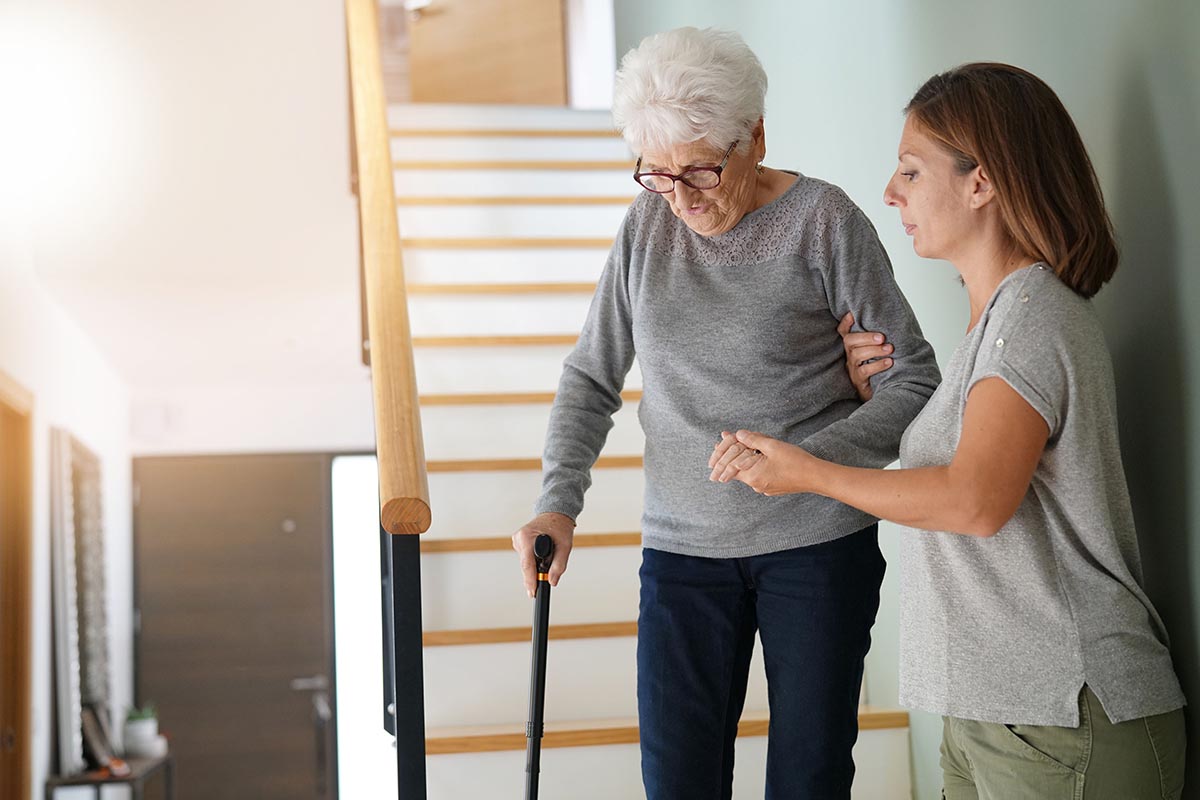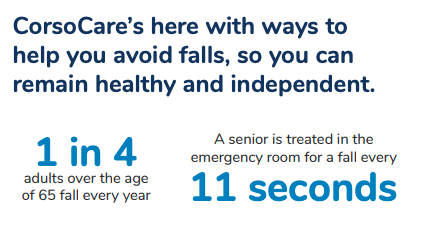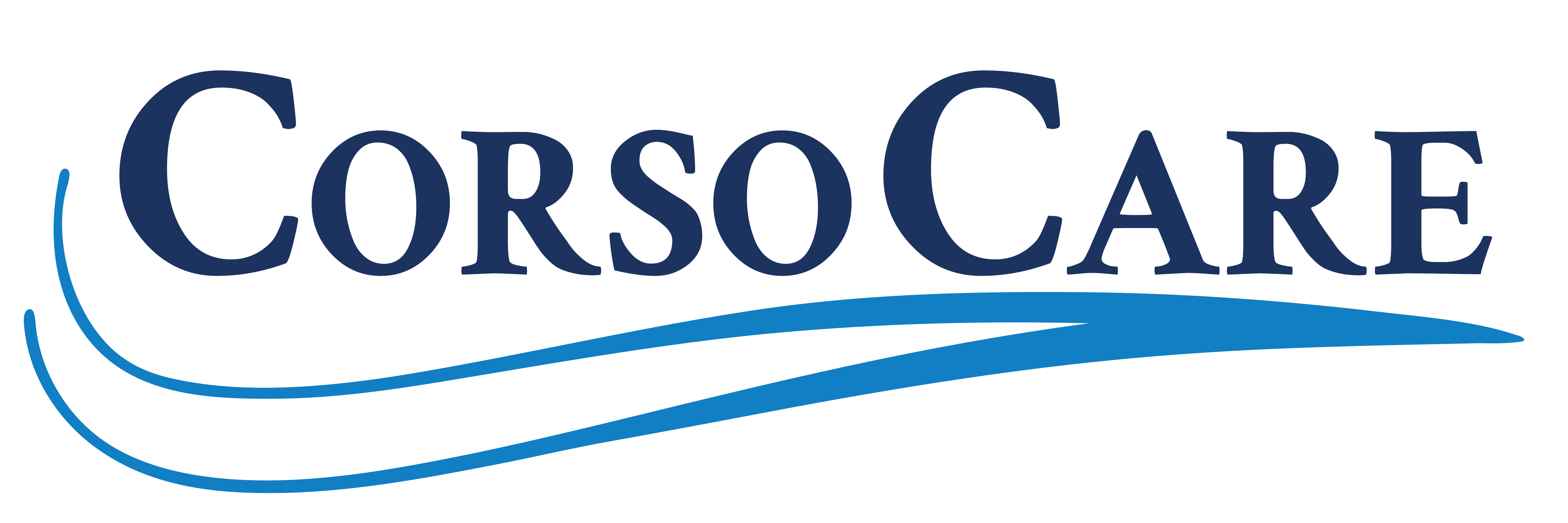
Fall Prevention
Mastering Fall Prevention: Safeguarding Seniors’ Independence
As we age, preserving our health and independence becomes a top priority. One significant concern that often goes unaddressed is the risk of falls among older adults. However, there’s good news – you can take proactive steps to reduce your chances of becoming a fall statistic. In this blog post, CorsoCare is here to provide you with practical, easy-to-follow tips for fall prevention, so you can stay on your feet and maintain your independence.

1. The Alarming Statistics
Before diving into prevention strategies, it’s essential to understand the scope of the issue. Every year, 1 in 4 adults over the age of 65 experiences a fall. Even more alarming, a senior is treated in the emergency room for a fall every 11 seconds. These statistics highlight the urgency of fall prevention measures, and you can take charge of your safety with the following tips.
2. Shoe Selection Matters
Your choice of footwear can significantly impact your stability and balance. Ensure you wear properly fitting, sturdy shoes with flat, nonskid soles. Well-fitted shoes provide essential support and traction, reducing the risk of slipping and falling.
3. Medication Check-Up
Many medications prescribed to seniors may have side effects such as light-headedness, dizziness, or drowsiness. Regularly review your medications with your healthcare provider to ensure none of them contribute to a higher risk of falling. Your doctor can help you adjust your prescriptions if needed.
4. Declutter Your Living Space
A clutter-free home is a safer home. Take the time to declutter and remove any items that could lead to falls, such as bulky rugs, loose cords, or objects stored on the ground. By eliminating these hazards, you create a safer living environment for yourself.
5. Light the Path to Safety
Proper lighting is crucial for fall prevention. Ensure that all areas of your home are well-lit, as low light and shadows can make it challenging to navigate safely. Installing brighter lighting or motion-activated lights in high-risk areas can significantly reduce the chances of tripping or stumbling.
6. Embrace Regular Exercise
Frequent, light exercise can be a game-changer for fall prevention. It helps maintain your balance, strength, and blood flow throughout the body, reducing the likelihood of a fall. Incorporate exercises such as walking, tai chi, or yoga into your daily routine to stay active and steady on your feet.
7. Protect Your Vision
Annual eye examinations are essential for seniors to ensure optimal vision. Regular check-ups can identify any major changes or obstructions in your vision that may contribute to falls. Addressing eye health concerns promptly can help you maintain clear vision and avoid potential hazards.
In conclusion, fall prevention is a vital aspect of maintaining your independence and overall well-being as you age. By following these simple yet effective tips, you can significantly reduce your risk of falls and continue to enjoy a fulfilling and independent life. Don’t let falls be a statistic in your life – take proactive steps today to safeguard your future.
